Art Metal Workshop, with over twenty years of industry experience, excels in providing wheelchair ramp solutions for homes in Toronto. Our mastery in creating ramps ensures accessibility without compromising on design, making every entrance safe and welcoming. Embrace peace of mind with our lifetime warranty and start with a complimentary estimate to enhance the accessibility of your home.
Order Wheelchair Ramps in Toronto
How Much Does it Cost to Install Wheelchair Ramps?
The cost of installing a wheelchair ramp in Toronto can start at $2800 per ramp. The actual cost may vary depending on factors such as size, design complexity, materials used, and the specific contractor you choose. We recommend you consult with local wheelchair ramp specialists in Toronto to get a more accurate estimate based on your specific project requirements.
Local Wheelchair Ramp Contractors in Toronto

Embrace enhanced mobility and independence with Art Metal. With over two decades of expertise, we take pride in our exemplary track record of success. Our services are synonymous with innovation and quality, recognized through a stellar 4.9-star rating on Google and accolades on Homestars.com from 2010 to 2024. Our wheelchair ramps blend functionality with aesthetic appeal, ensuring a seamless match with your home’s design. Opt for Art Metal Workshop for unrivaled quality.
Are you looking for Wheelchair Ramps Installation in Toronto?
“Indoor/Outdoor Wheelchair Ramps in Toronto
Why Choose Art Metal for Wheelchair Ramps?

Choose Art Metal’s Wheelchair Ramps in Toronto for your mobility needs. Opt with Art Metal for unrivaled quality and to make your vision a reality. With expertise, customization options, and exceptional customer service, we are the trusted choice.
- Over 12,000 iron work projects completed in the GTA.
- Voted #1 on Homestars.com 2010-2024
- 20 Years in business.
- Featured on 3 home improvement TV shows.
- Lifetime warranty, free estimate.
Ramps for Homes with Handrails

If there are height differences outside or inside your house that are difficult for a person with special needs to overcome, you definitely need to install a ramp. Such a construction looks like an inclined walkway and acts as an alternative to stairs for wheelchair or child carrier entry.
Installing this construction is a process that must be approached responsibly. Take into account the requirements of legislation protecting the rights of people with disabilities and the peculiarities of an individual architectural project. Let’s talk about what your ideal wheelchair ramp should be.
Designing Reliable Home Ramps
When working on a project of wheelchair ramps for homes, the special needs of people with disabilities must be taken into account, as well as the presence of other family members who are not comfortable using stairs. This could be children with bicycles and scooters or mothers with strollers. Below are some guidelines to help your wheelchair ramp be reliable and comfortable.
Consider the weight of the unit that you will be using
Agree, there is a difference between whether the platform is designed for a bulky wheelchair or a lightweight stroller. Depending on the specifics of use, you can choose the optimal material of the construction and calculate its dimensions

Choose a location for the ramp
Residential ramp installation should be done with your house in mind. Choose the entrance with the most space in front of the door so the person in the wheelchair can turn around comfortably. The more space you have in front of your house, the longer the ramp can be made and the more maneuverable the wheelchair can be.
Decide on additional equipment
Think in advance about what you might need for comfortable and safe use of wheelchair ramps for homes. Be sure to order handrails, as well as think about anti-slip coating – it will be vital in rainy seasons or when the surface of the platform gets covered with ice.
Choose the best production material
The modern construction market offers a large number of options of what you can make handicap ramps for home. Such structures are made of aluminum, rubber, plastic, steel, and concrete. They all have different characteristics and are chosen individually, depending on the anticipated load on the finished product, the place of its location, and the budget of the project.
Whichever option you choose, in the construction of residential ramps, you need to navigate to the provisions of the ADA – the law that governs the rights of people with special needs
[widget id=”nav_menu-35″]
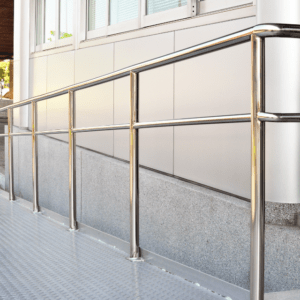
Ramps for homes: Top ideas for realizing your plans
If there is a person in your circle who moves around in a wheelchair, you should definitely have a wheelchair ramp installed in your house for their comfort. What it will be, everyone decides for themselves, but we will introduce you to the main varieties of such structures. Depending on mobility, there are three main types of installations.
Permanent ramps for homes
These are solid structures that are installed at the entrance to the building and last for decades. They are installed on concrete footings and made of metal or concrete for special strength. According to building regulations, such structures are mandatory for all residential buildings, and the current legislation provides commercial ramps.
Hinged solutions
If due to the project’s peculiarities, it is impossible to mount a stationary structure, there is an alternative – tilting systems. For their operation, a special lifting mechanism is used. At the right moment, it lowers the platform, which moves the wheelchair.
Removable designs
Detachable designs are the way to go if you need a ramp that is easy to transport from place to place. Some of them can easily fit in the trunk of your car when folded and can easily be used wherever you need them – there are even ramps for a mobile home and examples for suitcases.
Depending on the type of construction, there are three types of wheelchair ramps.
Modular ramps for homes
As a rule, these are steel products consisting of several sections with a mesh surface with anti-slip properties. Their installation does not require complex construction work and permission from the relevant authorities.
Sliding designs
These solutions allow for resizing when needed. You can adjust the ramp length and fold it to the smallest size for carrying. Easy transportation is also facilitated by the low weight of the equipment, which is achieved by making it out of aluminum. They are ideal for moving out of buildings and vans.
Telescopic ramps
Such products consist of two separate skids – ramps – the distance between which coincides with the distance between the wheels of the wheelchair. You can adjust the length of this ramp, but the width may not be suitable for vehicles with non-standard wheel spacing.
Whether you choose metal ramps for home, aluminum wheelchair ramps for homes, or any other option, you can’t do without sturdy railings. They will support and protect the structure.
Expert Wheelchair Ramp Installation
At Art Metal, you can order railings for concrete and metal wheelchair ramps for homes, regardless of the type of design and purpose. We make products from different metals – steel, iron, and aluminum – because metal railings optimally meet the basic requirements to these elements of the ramps & rails complex.
Requirements on railings for wheelchair ramp
– sturdy material that can withstand considerable loads;
– smooth surface without rough or sharp parts;
– rounded, protected edges and extensions;
– round or rounded cross-section for easy gripping.
With us, you can be sure that your ramps will not only perform their function but also fit perfectly into the overall interior or exterior of the building.
To calculate the cost to add a ramp to a house, you can use a residential ramp calculator or contact our manager for detailed advice. We will listen to your ideas and find an individual solution for everyone!
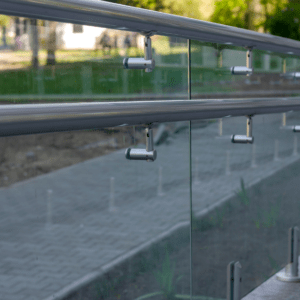

We Make Wheelchair Ramps For Stairs ADA Compliant
“I do not want to face any annoyances after my ramp is installed” – a familiar wish? Then before you make a purchase, you should check whether the product complies with legal requirements and the local municipality.
Rules for residential ramp installation in Canada:
- Home ramps for elderly should be placed in all locations where the surface height difference is 0.5 inches or more. Alternatively, specialized lifts or elevators are suggested, but this is a more expensive solution.
- The ramp width between handrails must be more than 36 inches.
- The maximum lift per run shall not exceed 30 inches, and there is no limit to the number of possible runs
- The maximum allowable slope is 1:12, which means every 12 feet, the elevation may change by 1 foot. Deviations from this standard for ramps with a maximum rise of 3 and 6 inches are 1:8 and 1:10, respectively
- The cross residential ramp slope must not exceed a ratio of 1:48.
- Platforms at the top and bottom of ramps must be at least 36 inches wide and 60 inches long.
- Handrails must have handrail extensions at least 12 inches long.
- If the wheelchair ramp is opposite the door opening and interferes with its opening, the standards recommend that the direction of opening be reversed.
Residential ramp design, which fully meets the above requirements, can be created only by professionals in their craft. We offer aluminum and steel ramps, railing for ramps, handrails for ramps, and a guard for a ramp. Comfortable wheelchair ramps are a worthy object for a monetary investment because the safety and comfort of your home are above all.
FAQs About Wheelchair Ramps
How much does it cost to install a ramp?
The installation cost depends on the type of construction you choose and the material used to make the product. Use the residential ramp calculator to get accurate information.
How high should a railing be on a ramp?
Railings should be between 34 and 38 inches high, but if it is an additional railing for children, their height should not exceed 28 inches, and they must be at least 9 inches from the main railings.
Do ramps need railings?
ADA requires railings to be installed on all ramps above 6 inches.
What is the slope for a wheelchair ramp in Canada?
In Canada, the recommended slope for a wheelchair ramp, as per the Accessibility for Ontarians with Disabilities Act (AODA) and similar standards, is a 1:12 ratio. This means for every 1 inch of vertical rise, there should be at least 12 inches (or 1 foot) of ramp length. This ratio is also in line with the Canadian Standards Association (CSA) and is designed to ensure that ramps are safe and easily usable for individuals using wheelchairs.
How long of a ramp do I need for a 2 foot rise?
For a 2-foot rise, you would need a ramp that is 24 feet long. This calculation is based on the 1:12 slope ratio (2 feet * 12 inches/foot = 24 feet). It’s important to also consider the addition of landings at the top and bottom of the ramp, and possibly intermediate landings depending on the total length and configuration of the ramp, as these are often required for rest and maneuvering. Always check with local building codes and standards for specific requirements, as they can vary by jurisdiction and the specifics of your project.









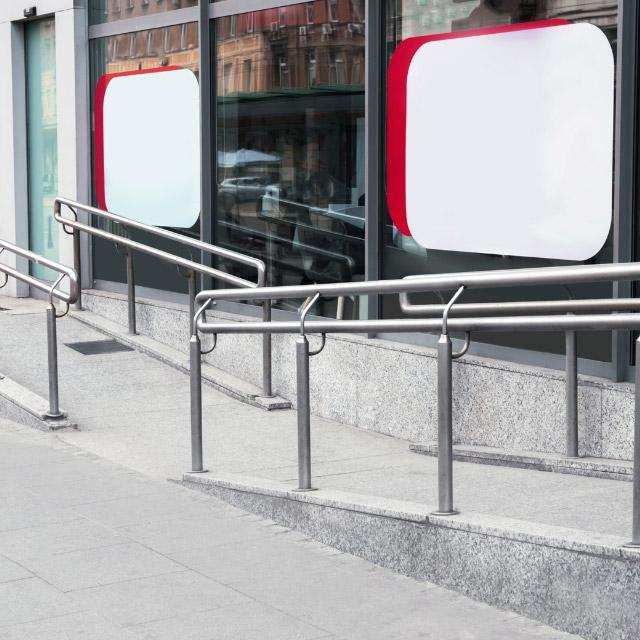

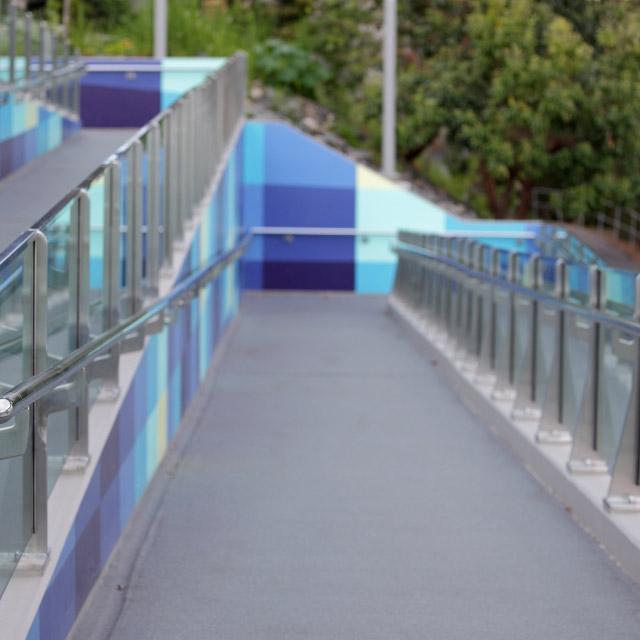
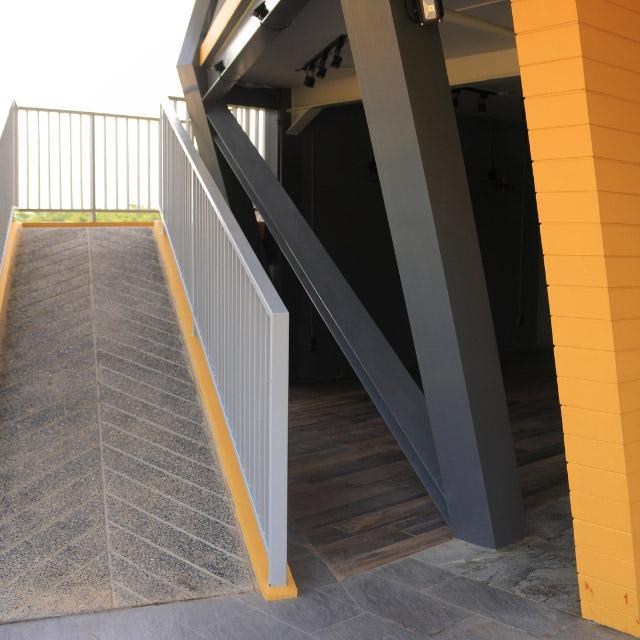
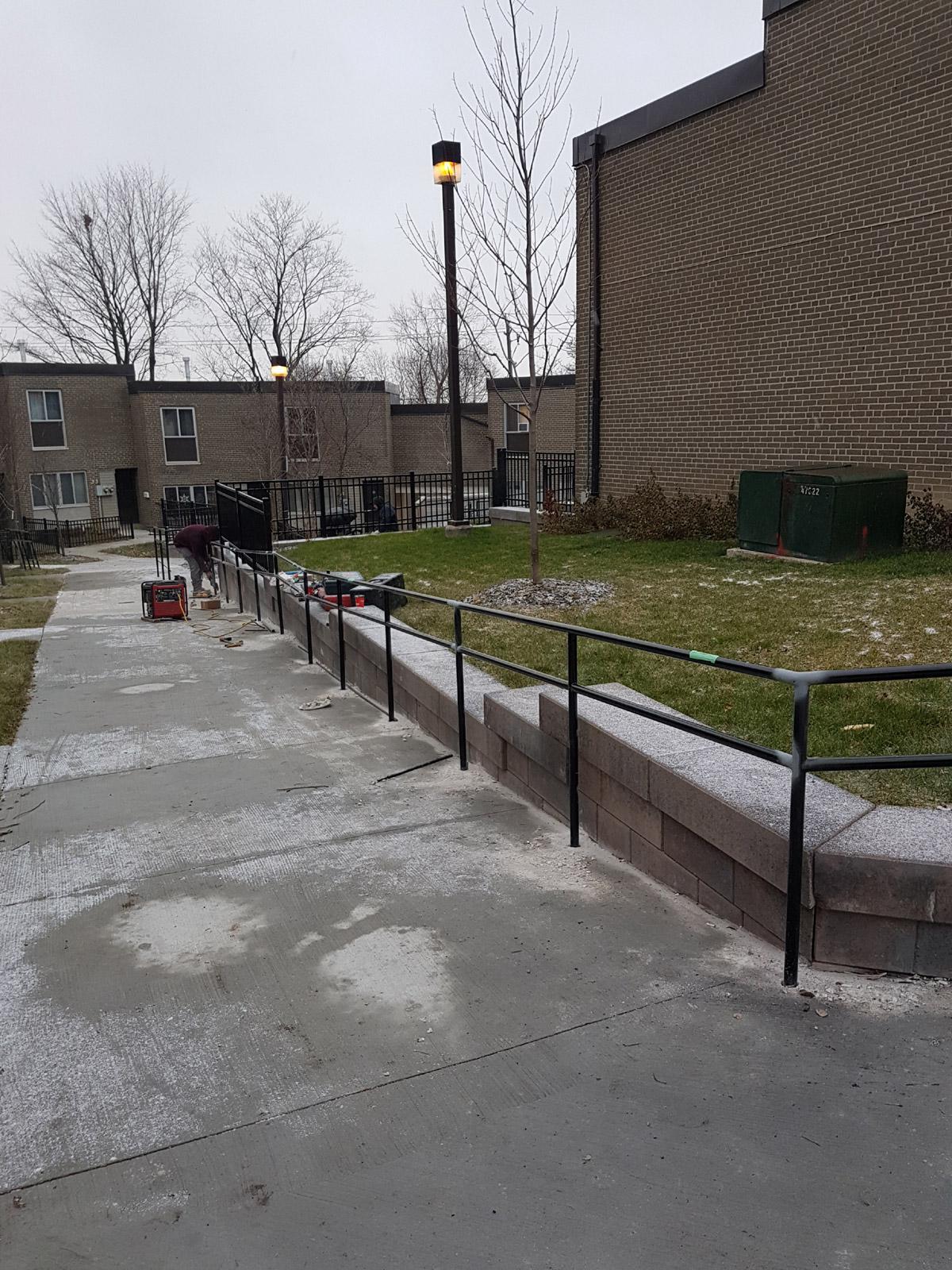


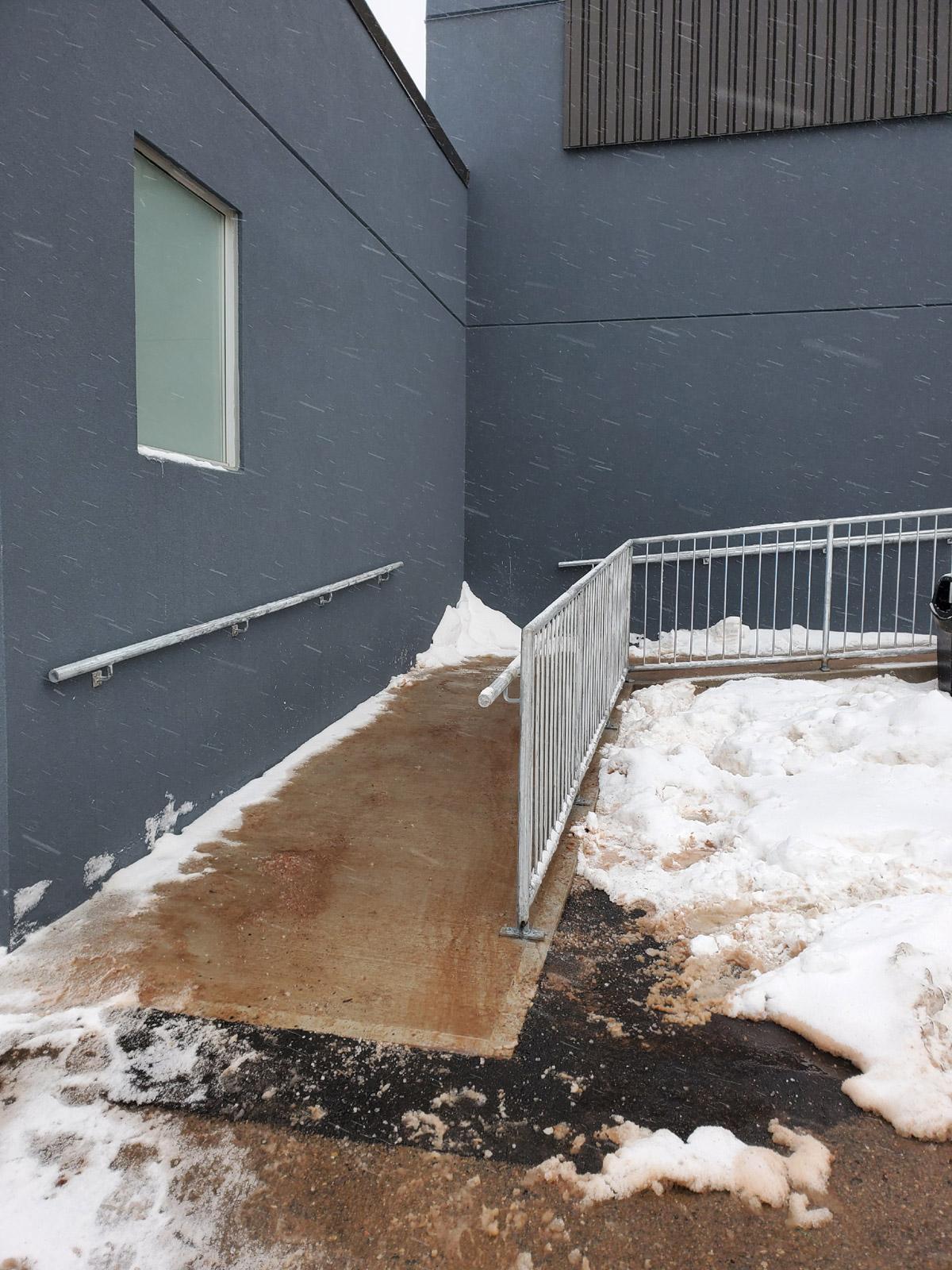

 Chat
Chat 








